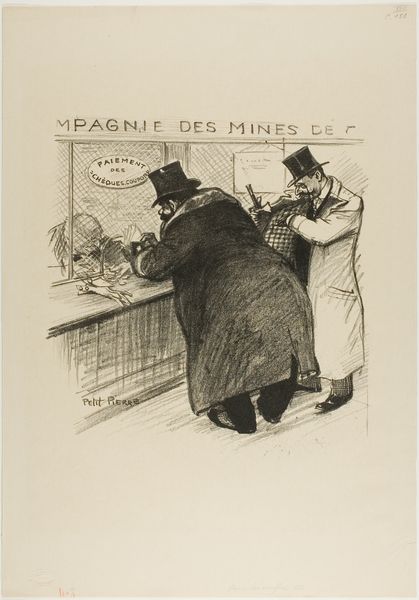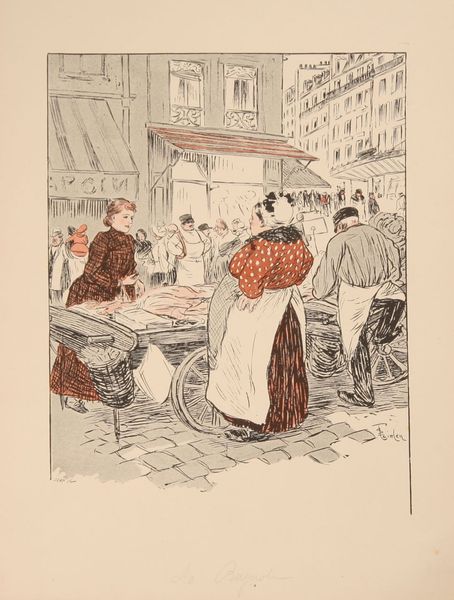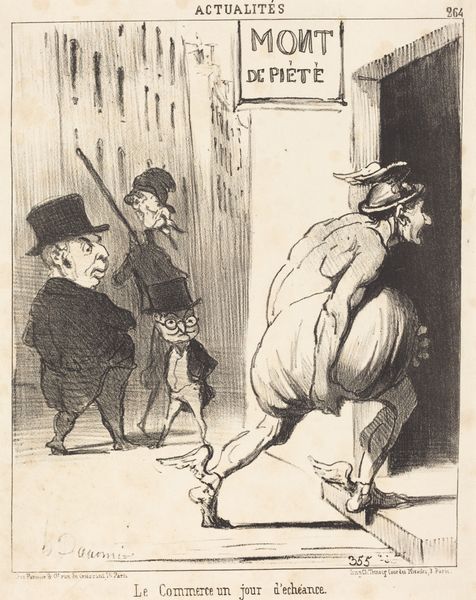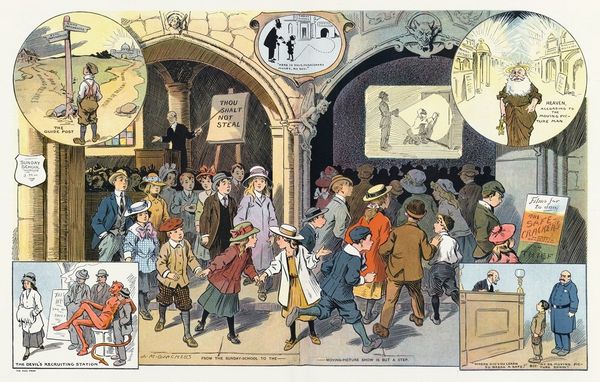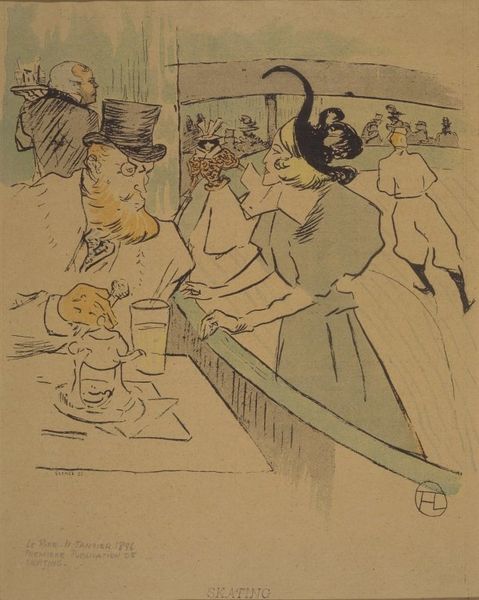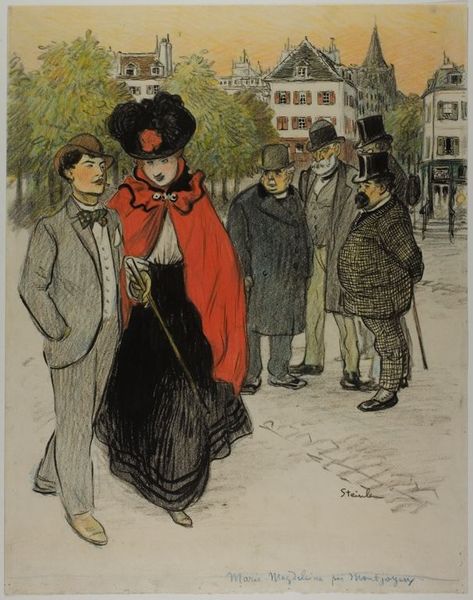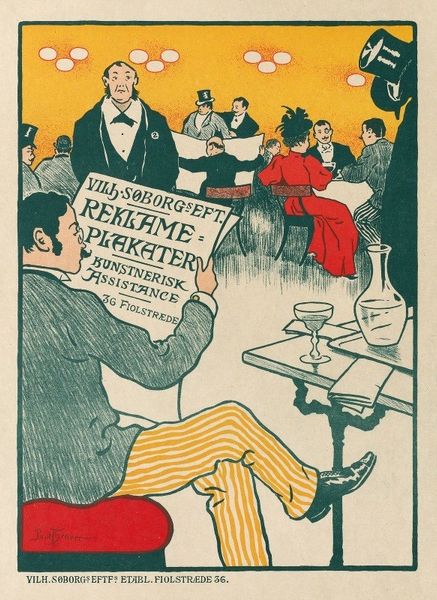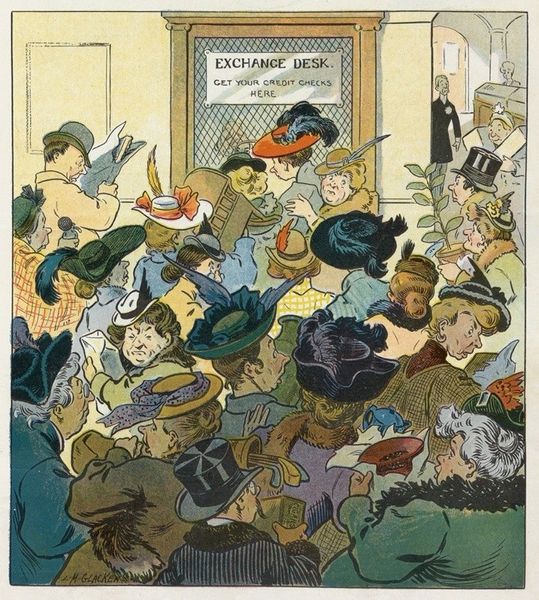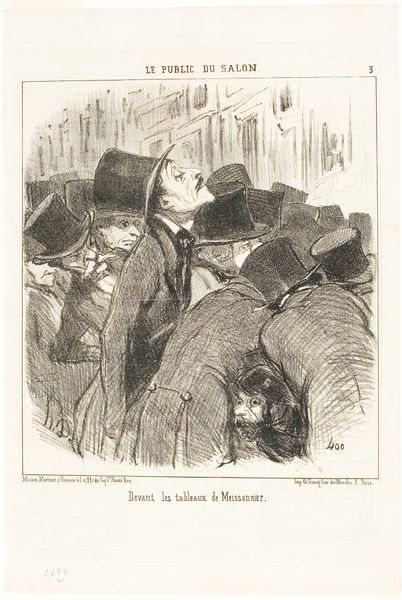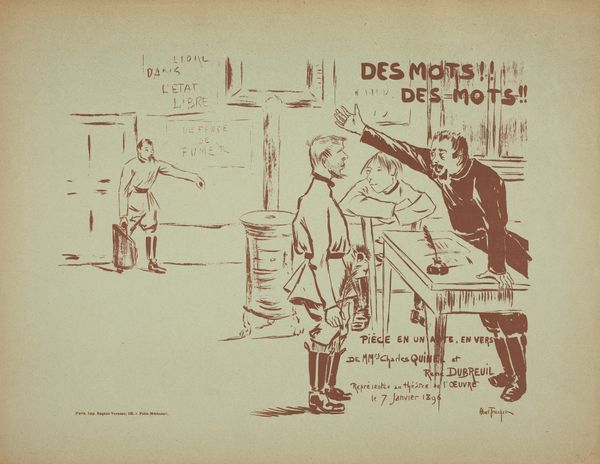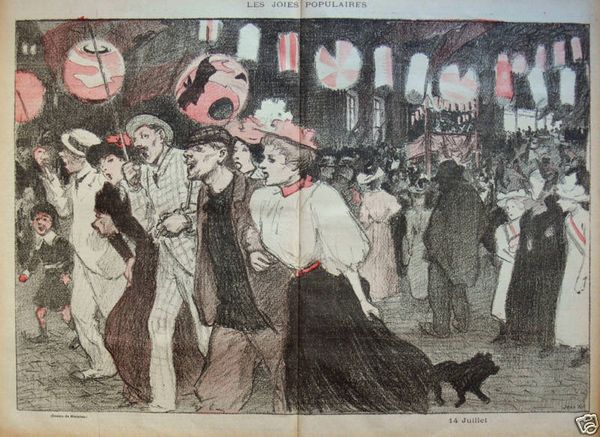
Copyright: Public domain
Curator: "Dans la Vie," or "In Life," by Théophile Alexandre Steinlen, created around 1901. This lithograph print on paper presents us with a bustling Parisian street scene. Editor: My first impression is the overwhelming movement. A sense of the accelerated pulse of city life captured with an almost frenetic energy. The light color palette is quite remarkable. Curator: Steinlen, influenced by Impressionism and Realism, frequently depicted the lives of ordinary people. Look at the repetition of figures and how it amplifies the symbolism of the everyday routine and the sheer mass of the urban population. Notice the inclusion of working-class individuals. Their presence embodies perseverance. Editor: The dynamism is constructed via line quality. See how the varying thickness and direction create rhythm? The spatial depth—the overlapping and the receding figures—is an essential formal device. The dogs become almost like emblems of the city itself—streetwise, scrappy, integral to the scene but also slightly detached. Curator: Dogs in art, throughout history, often act as symbolic mirrors reflecting back aspects of human society. Are they companions, scavengers, pets, workers, all adapting to the unforgiving structure of urban life. How might our perceptions of that era differ if there were no canine presence? Editor: Well, then the human activity may become unmoored, I suppose. We need to view the visual strategy in the piece, for example how Steinlen creates contrast. The dark ink accents defining the figures against the vast whiteness of the paper contribute an immediacy. The eye constantly seeks a point of stabilization, yet is perpetually thrown back into the current. Curator: I think that search reflects how cities themselves impact perception and awareness. It seems "Dans la Vie" explores collective existence and shared cultural awareness. It subtly hints at social commentaries, the disparity among lives. Editor: I agree entirely. Seeing the components, the relationships, and that central rhythm allows entry to what, on first viewing, appears to be the chaos. It actually reveals structure, a hidden organization, a visual poetry of city existence. Curator: Indeed. Steinlen invites a deeper connection to those seemingly minor elements shaping our understanding of culture, memory, and shared lived experience. Editor: A beautiful observation! This was very enriching. I find that thinking about the movement, as we did, lets the scene come alive.
Comments
No comments
Be the first to comment and join the conversation on the ultimate creative platform.
